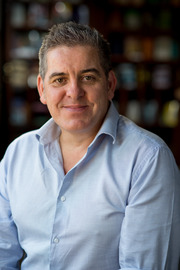Delve into a vibrant spectrum of drama and performance, including theatre, dance, and live art. From political rallies to sacred rituals and pop stars, we explore how performance shapes culture, history, and personal identity.
The Theatre and Performance Studies program at the University of Sydney attracts global academic visitors and boasts renowned research staff in theatre, dance, dramaturgy, and more.
Our graduates pursue diverse paths, from professional theatre, dance, and production management to drama teaching, arts administration, and beyond while others leverage the discipline's insights and research skills in fields like law, medicine, public administration, social justice, and foreign affairs. Many of our students pursue postgraduate study and become tertiary-level educators.
Theatre and Performance Studies looks at a broad range of aesthetic, social and everyday performances across theatre, dance or live art and the stage, to the performative dimensions of politics, sport, cinema and popular culture. Explore a range of different approaches to performance making, engage with professional artists-in-residence and learn how to document performative events and build these observations into a detailed critical analysis.
Undergraduate
*Available to all students studying the Bachelor of Arts, Bachelor of Economics and Bachelor of Visual Arts, as well as all combined Bachelor of Advanced Studies degrees.
Postgraduate Research
Manual Description : Discipline Chair
Manual Address :
Manual Addition Info Content :
Manual Type : profile

_self
Auto Type : contact
Auto Addition Content :
Auto Name : true
Auto Position : true
Auto Phone Number : false
Auto Mobile Number : true
Auto Email Address : true
Auto Address : false
UUID :
Our focus includes the expansive realm of performance and its intricate production and reception processes. Our areas of expertise include:
The Rex Cramphorn Performance Research Studio is our fully-equipped studio facility available to external practitioners through our artist-in-residence program. “The Rex” is located on Level 1 of the John Woolley Building (A20). The studio can be accessed directly from Manning Rd.
Experience artistic collaboration at the Rex Cramphorn Performance Research Studio, where professional artists join forces with our staff and students to advance research in theatre and performance studies. Refer to the What's On Calendar to stay updated on our projects and events.
The Rex Cramphorn Studio, named in honour of a brilliant theatre director and innovator, with significant ties to the discipline, is a versatile open space. This rectangular studio offers practitioners ample room for rehearsals, workshops, and performances, adapting to various formats with ease.
The Studio boasts a main sprung floor and a small foyer area with a kitchenette and toilets. There is also a mezzanine level housing toilets, changing rooms, and showers. The studio is well-equipped with a semi-flexible lighting grid, rated rigging positions, a new LED theatre lighting package with control, a ceiling-mounted data projector, an audio control desk, and a PA system.
Studio size specifications: Length 12.7m | Width 8.5m | Height 4m.
The annual program of artist residencies in the Rex Cramphorn Performance Research Studio is curated and managed by the Placements and Project Coordinator, Dr Barbara Campbell. Artist residencies are offered with the expectation that artists engage with the teaching and research programs of the discipline; this may include student observation, skills workshops, research collaborations with academics, seminar presentations for postgraduates, or invitations to showings.
Expressions of interest for Round 1 2026 Rex Cramphorn Studio Artist-in-Residence program are now open and close in late October. Contact Barbara Campbell (barbara.campbell@sydney.edu.au) if you’d like to discuss how your project can be integrated within the discipline’s teaching and research programs prior to submitting your EOI. Only applications for residencies of three- or four-weeks duration between 12 January and 30 July will be accepted in Round 1. Round 2 EOIs for August–December 2026 will open in April 2026.
The discipline publishes a peer-reviewed journal, About Performance, which provides an international forum for analysis, theory and critique by academic researchers and performance makers. We welcome articles that bring theoretical perspectives derived from other disciplines to bear on performance practice. The journal is published annually, and each issue is devoted to a single theme.
Distributed via Informit Humanities & Social Sciences Collection and ProQuest Central. Editor: Ian Maxwell.
Banner image: Angela Goh, Sky Blue Mythic, developed at the Rex Cramphorn Performance Research Studio for Keir Choreographic Awards, Carriageworks, 2020. Photo: Zan Wimberley.
John Woolley Building (A20),
The University of Sydney, NSW, 2006
Phone: 1800 SYD UNI (1800 793 864) (in Australia)
+61 2 8627 1444 (outside Australia)
Email: sace.enquiries@sydney.edu.au